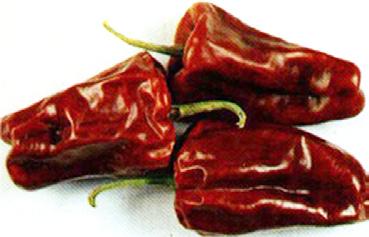Warangal Chapata Chilli gets GI Tag
The Warangal Chapata chilli, popularly known as Tomato chilli, has received the Geographical Indication (GI) tag from the GI Registry of India on March 28, 2025. This recognition is for the farmers of Telangana, particularly those in the Warangal district, as it is expected to enhance their income and market reach. The GI tag is the 18th for Telangana and marks the unique qualities of this chilli variety.
Characteristics of Warangal Chapata Chilli
The Warangal Chapata chilli is distinguished by its bright red colour and round shape, resembling a tomato. It is known for its low pungency, making it ideal for pickles and as a natural food colouring agent. This variety is cultivated on approximately 3,000 hectares across Warangal, Hanmakonda, Mulugu, and Bhupalalli districts.
Harvesting and Cultivation
Harvesting occurs between February and March. Farmers pick the pods by hand, typically in two to three rounds. The crop requires less labour due to its unique growth characteristics. Each plant produces fewer but larger pods with weak pedicle attachments, facilitating easier harvesting.
Economic Impact
Around 20,000 farmers are poised to benefit from the GI tag. The price of Warangal Chapata chilli is anticipated to rise from ₹300 to ₹550 per kilogram. This increase reflects the anticipated boost in demand due to the GI recognition.
Market Demand and Export Potential
The global demand for natural pigments has surged, particularly for oleoresins used in various industries. Countries such as the United States, China, the United Kingdom, and Germany are key markets. The Warangal Chapata chilli is well-positioned to meet this demand, especially following a ban on artificial colourants.
Historical Context
The cultivation of Warangal Chapata chilli has a rich history of over 80 years. It has been passed down through generations, particularly within the Velama community. The GI application was filed in 2022 by local farmer groups and agricultural institutions to protect and promote this heritage crop.
Month: Current Affairs - April, 2025
Category: Agriculture Current Affairs








